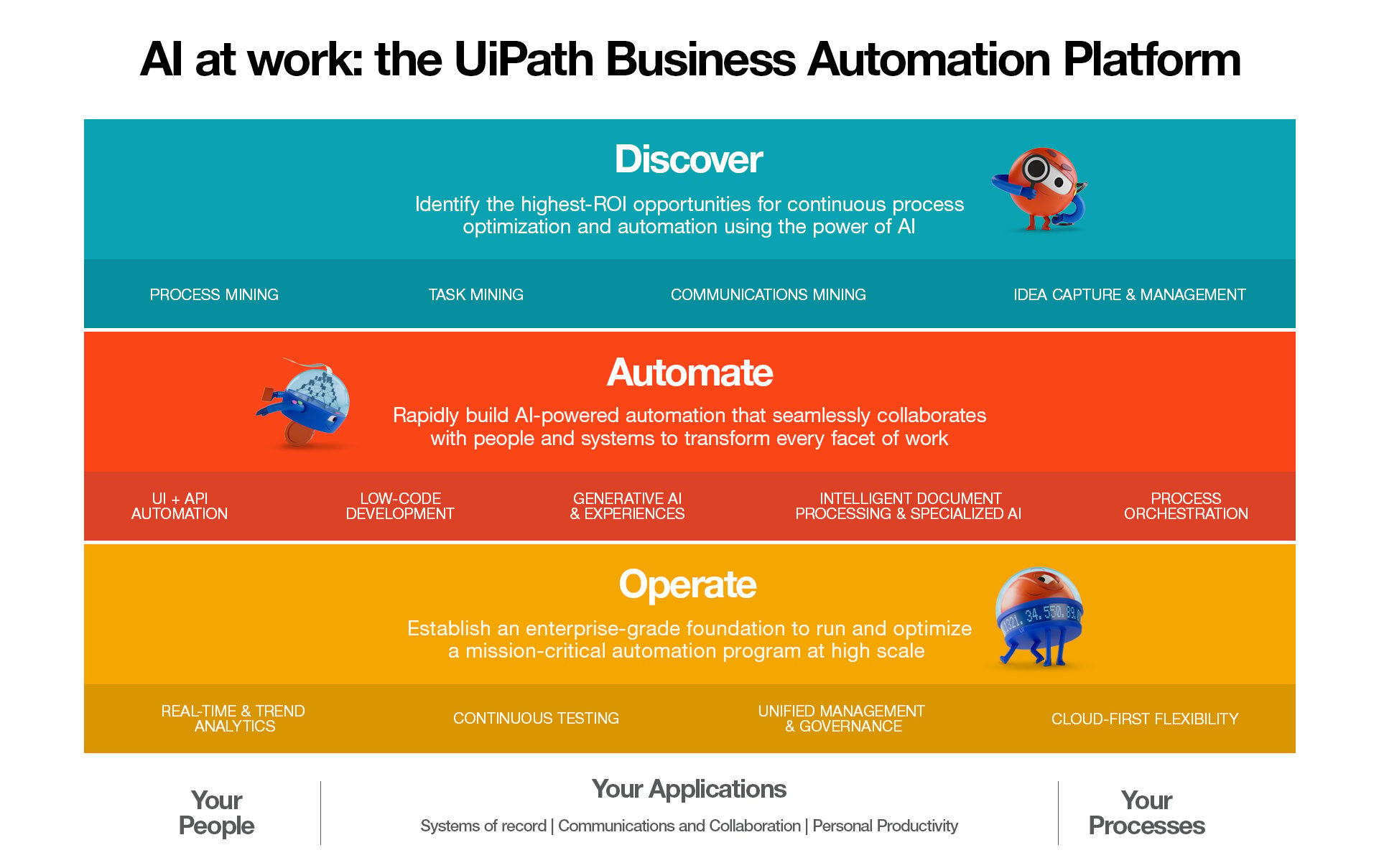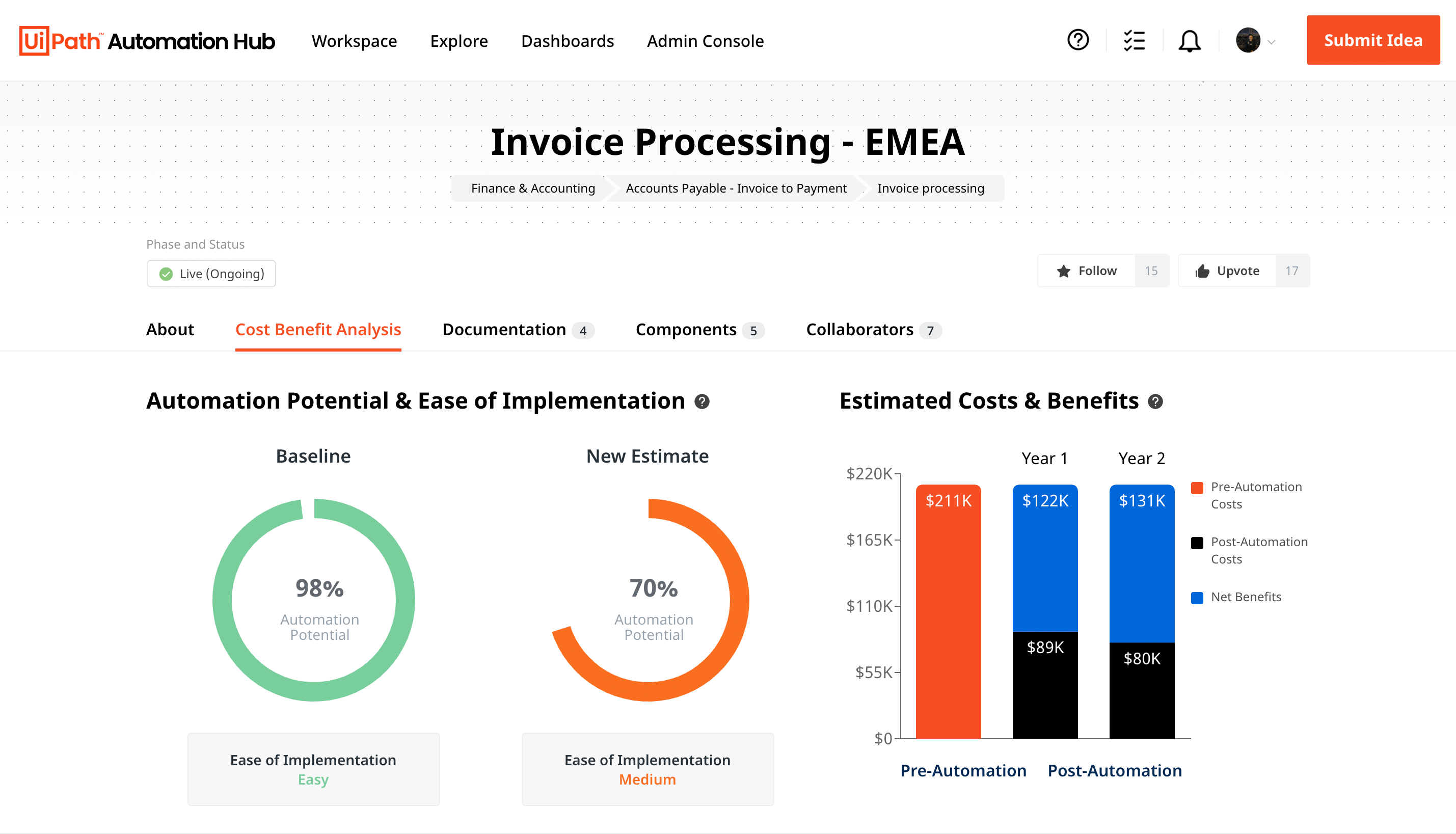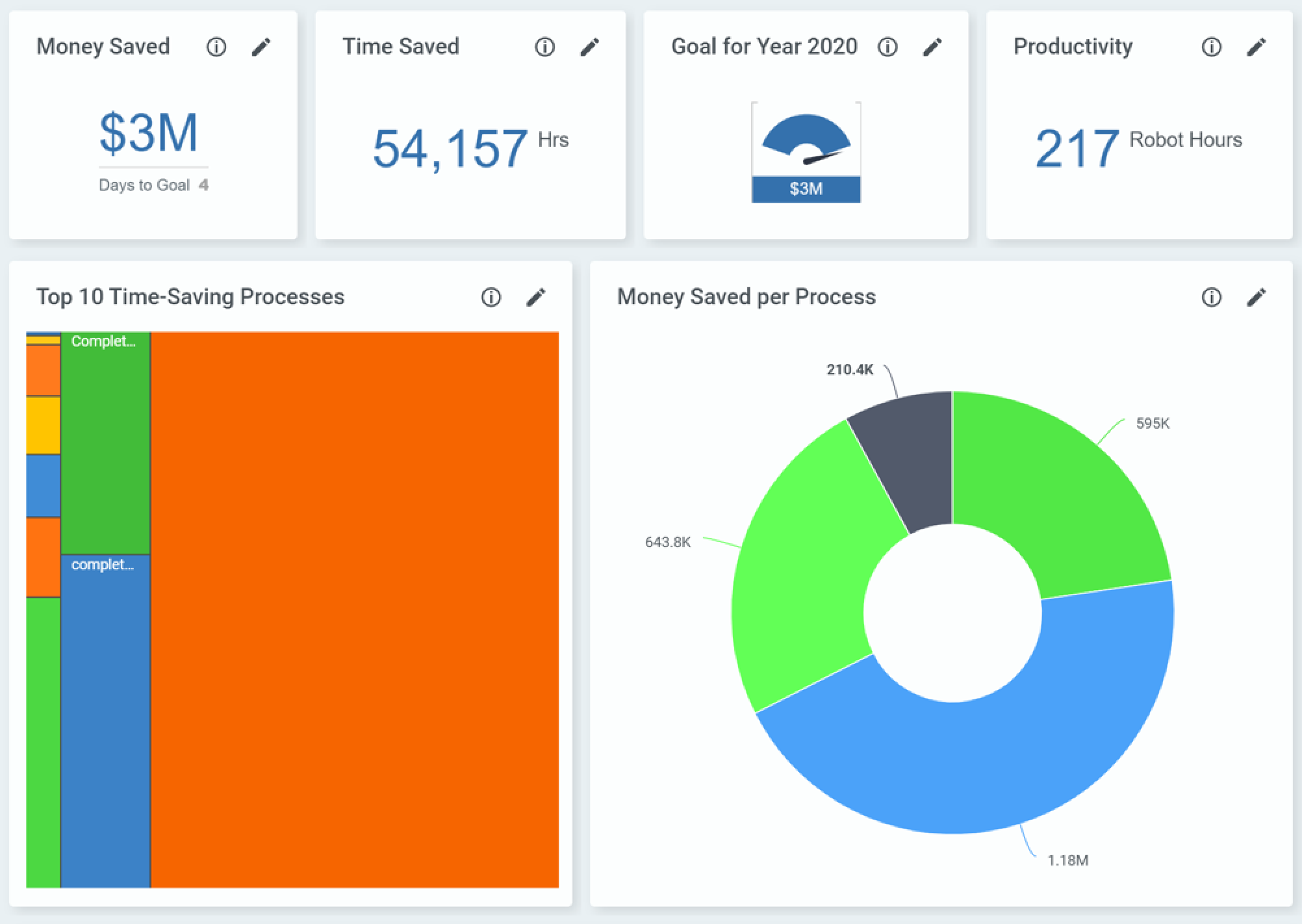Prove out, build out, move out
To get rolling on your automation journey, you need to prove out automation’s value to the organization with a strong proof of concept (PoC), build out your initial team and your technology foundations, and move out to capture the best initial opportunities. Here’s what’s involved.
Complete a successful PoC to get the buzz started
Companies don’t often jump into automation with both feet—they want to test the waters first. So if you want to move automation forward in your company, you’ll need to prove out its value.
Show, don’t tell
A good way to demonstrate the power of automation is to complete a PoC. Make sure it focuses on a specific process and pain point, and clearly demonstrates how RPA can improve efficiency, throughput, and overall performance.
Now, build the buzz
Tell everyone—particularly senior management and the C-Suite—about your great PoC results, so that you can secure the commitments you’ll need to establish your initial automation center of excellence (CoE) and move forward on additional projects.
Build out teams and governing frameworks
In Stage 1, you’ll want to lay the groundwork for a scaled-up automation effort.
Set up a center of excellence
Stage 1 is when many organizations establish an automation CoE to take responsibility for developing, deploying, managing, and measuring automation projects across the enterprise. (Some companies disperse automation specialists into different functional areas—but we believe a CoE makes scaling and end-to-end automation much easier and recommend it as a best practice).
Create a core team
Get started with a small number of skilled RPA developers and perhaps an implementation manager. As your successful track record grows, so will your team, expanding to include more RPA developers and implementation managers, plus solutions architects, business analysts, and more.
Establish processes and roles, too
Now’s the time to clarify who does what, the way automation projects get done, the selection criteria you’ll use to build your pipeline, and the documentation you’ll need to move forward. Also, take the time to set out your plan for maintaining quality and measuring impact.
Webinar
Want practical, real-world tips on starting an automation journey? We’ve got just the ticket.
Spend an hour learning best practices for planning, implementing and managing your first automations from a company that’s been there and done that: Volkswagen Financial Services.
Select the technology platform that can support your vision
If you’re committed to a full-scale RPA journey that ends in organizational transformation, you’ll need an automation platform that can move you from discovering RPA opportunities to building automations to managing and measuring them. (In other words, the capabilities we’ve built into the UiPath Platform)
Automate more with the UiPath Platform

Build a pipeline and expand your successes
You’ve laid the foundation and built your team. Now, it’s time to build your automation pipeline and start capturing its best opportunities.
Get technology to help
Building a great pipeline becomes much easier when you have technology to help you crowdsource ideas, analyze processes to find opportunities across the enterprise, and help you prioritize the most promising projects. (Yes, it exists; check out Automation Hub to learn more).
Focus on best opportunities
Make sure your first projects have high ROI that’s relatively easy to capture, so you continue to build a track record of success.

Set up governance and establish your automation scorecard
Get ”eyes on” in high places
During this first stage, it’s a good idea to formalize the automation initiative by obtaining an executive sponsor and establishing a steering committee to provide support, resources, oversight, and governance.
Set up the scorecard
This group will need ongoing proof that your automation efforts are resulting in higher productivity, efficiency, and ROI gains. So this is the time to agree on an RPA scorecard and set up your measurement approaches.

Also worth a read

White paper
Identify the real business value of RPA
See how real-world businesses have taken their own automation journey—and arrived at new ways to make customers happier, improve employee satisfaction and efficiency, and leapfrog their competition.

Blog
Get the word(s) on RPA
Like every new technology, RPA has its own terms and acronyms. This glossary pulls them together for you.



